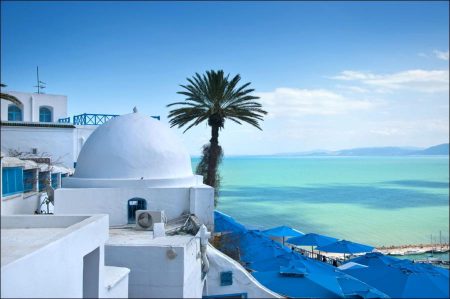Tunisia is situated between Algeria and Libya and has 750 miles of coastline on the Mediterranean. It is an oasis in many ways. Its acceptance of the Western world contrasts with the attitude of its fiercely nationalistic neighbors Algeria and Libya; its modern hotels from Tunusia to Hammamet and on down the coast to Sousse, Sfax and Djerba are among the best in Africa; it retains the old French colonial influence but loses none of its authentic Arab flavor.
You can spend vacation time in Tunusia in almost any way imaginable – on the wide sandy beaches, drinking smooth, inexpensive local wine and then, when the sun goes down, wander back through the orange groves to the hotel and dance outside under the stars. If you are robust and an eager sightseer, you can trek down into Sahara, and really get away from it all.
Much of Tunusia, like the hotels, the floodlit expressway from the airport to center of Tunis and the international theater in Hammamet is 20th century; but women are still veiled, and blinkered camels lumber round turning the grindstones of ancient mills. Much, of course, goes even further back. The winding maze of souks and markets seem ncredibly old, but are not as old remains of Carthage, Dougga, Kairouan and beautiful Colosseum at El Djem.
An aspect of Tunusia which makes it different is its sophistication: there is an elegance and the cuisine and environment which is missing elsewhere in the southern Mediterranean. This is perhaps best summed up in one unwritten, but universally observed, law – no new hotel may be built higher than the surroundings palm trees. So the new blends with, but never obscures, the old.
Views: 174



